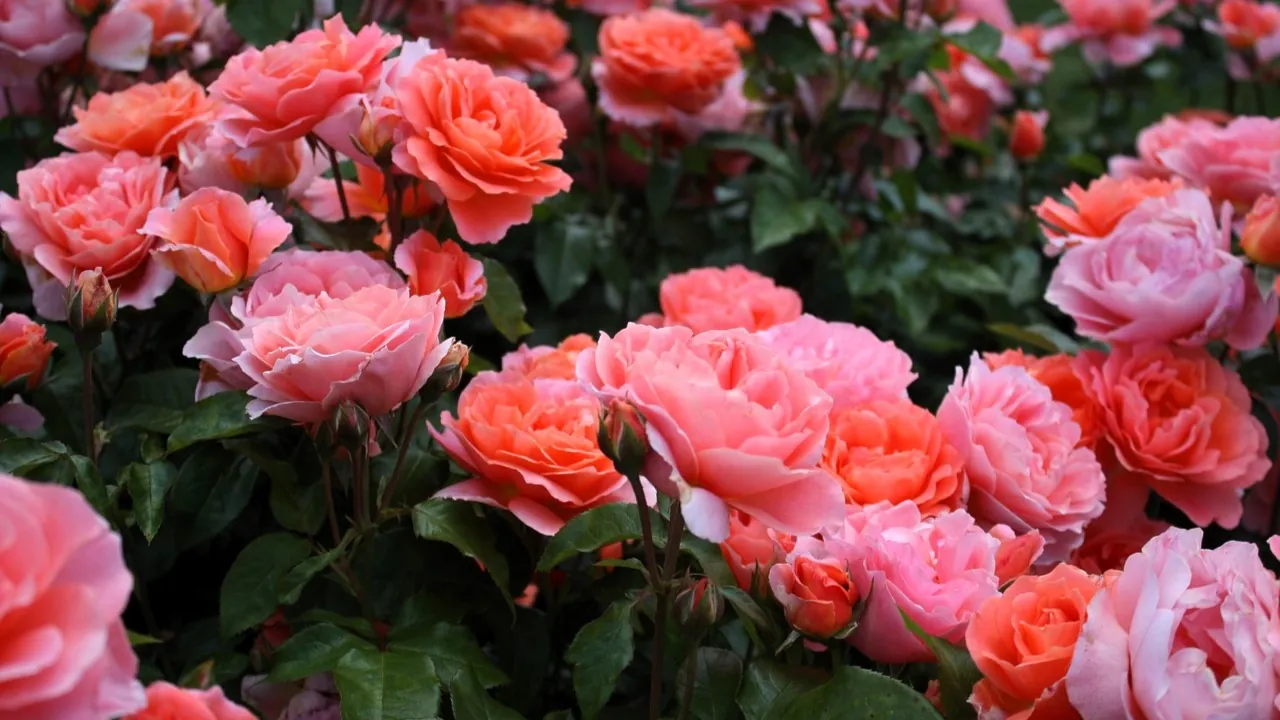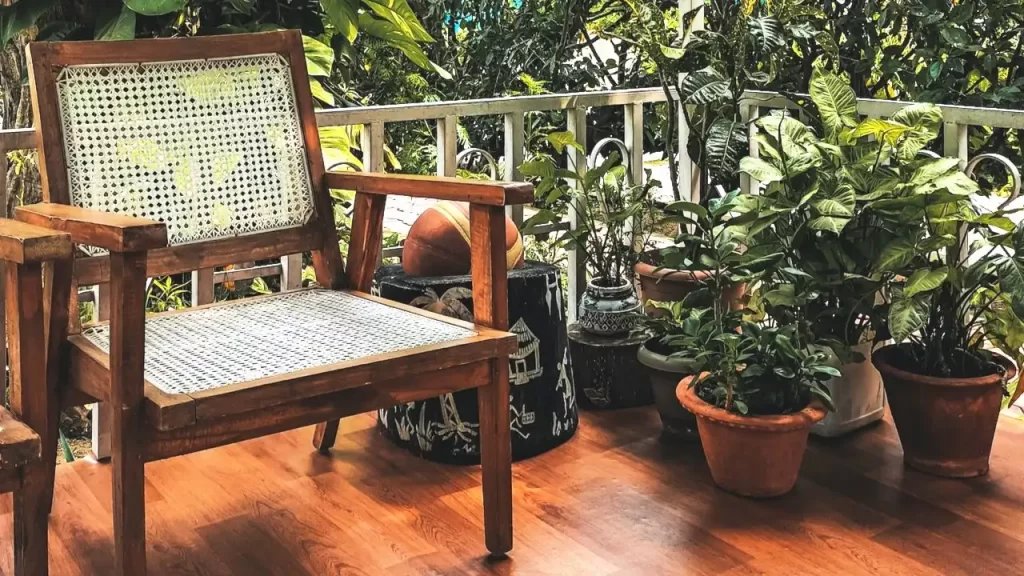- Introduction
- Antique Garden Roses vs. Modern Garden Roses
- Step 1: Choose the Right Variety of Garden Roses
- Step 2: Plant Your Garden Roses
- Step 3: Prune Your Garden Roses
- Step 4: Water Your Garden Roses
- Step 5: Fertilize Your Garden Roses
- Step 6: Protect Your Garden Roses
- Conclusion
- Frequently Asked Questions (FAQs)
- Question for you
- Author
Introduction
Garden roses, those magnificent blooms with their timeless beauty and intoxicating fragrance, are the jewels of any garden. They come in a variety of colors, shapes, and sizes, and they can brighten up any space with their elegance and charm. But can you nurture these enchanting blossoms in any climate, whether it’s hot, cold, dry, or humid? Yes, with the right knowledge and a dash of tender loving care, you can grow healthy and blooming garden roses all year round that’ll make your neighbors jealous. In this step-by-step guide, we’re going to unlock the secrets to cultivating garden roses in any climate, whether you’re facing a polar vortex or a desert heatwave. Before we start, let’s check the types of Garden Roses and high-level differences.
Antique Garden Roses vs. Modern Garden Roses
Antique garden roses are also known as heritage roses. They are the ancestors of modern roses and have been cultivated for centuries. Some of them are traced back to ancient times. These are famous for their fragrance, beauty, and hardiness. They usually bloom once a year, but some varieties can repeat flowering. They have a wide range of shapes, colors, and sizes.
Modern garden roses are the result of cross-breeding old roses with other species. They were developed after 1867 and have many advantages over old roses. They can bloom continuously throughout the season, have larger and more diverse flowers, and are more resistant to diseases and pests. However, they may lack the charm and scent of old roses, and require more care and maintenance.
Step 1: Choose the Right Variety of Garden Roses
The first step to grow garden roses in any climate is to choose the right variety for your region and conditions. There are thousands of types of garden roses, but not all of them are suitable for every climate. Some roses are more cold-hardy, some are more heat-tolerant, some are more drought-resistant, and some are more disease-resistant.
To find out which roses are best for your area, you can consult a local nursery, a gardening book, or an online database like the American Rose Society’s Rose Finder. You can also look for labels or symbols on the rose plants or packages that indicate their hardiness zones, heat zones, water needs, and disease resistance.
Some examples of garden roses that can grow well in different climates are:
- Hot and dry climates: Knock Out roses, Iceberg roses, Sunsprite roses, Belinda’s Dream roses
- Cold and wet climates: Rugosa roses, Explorer roses, Parkland roses, David Austin roses
- Mild and humid climates: Hybrid tea roses, Floribunda roses, Grandiflora roses, Climbing roses
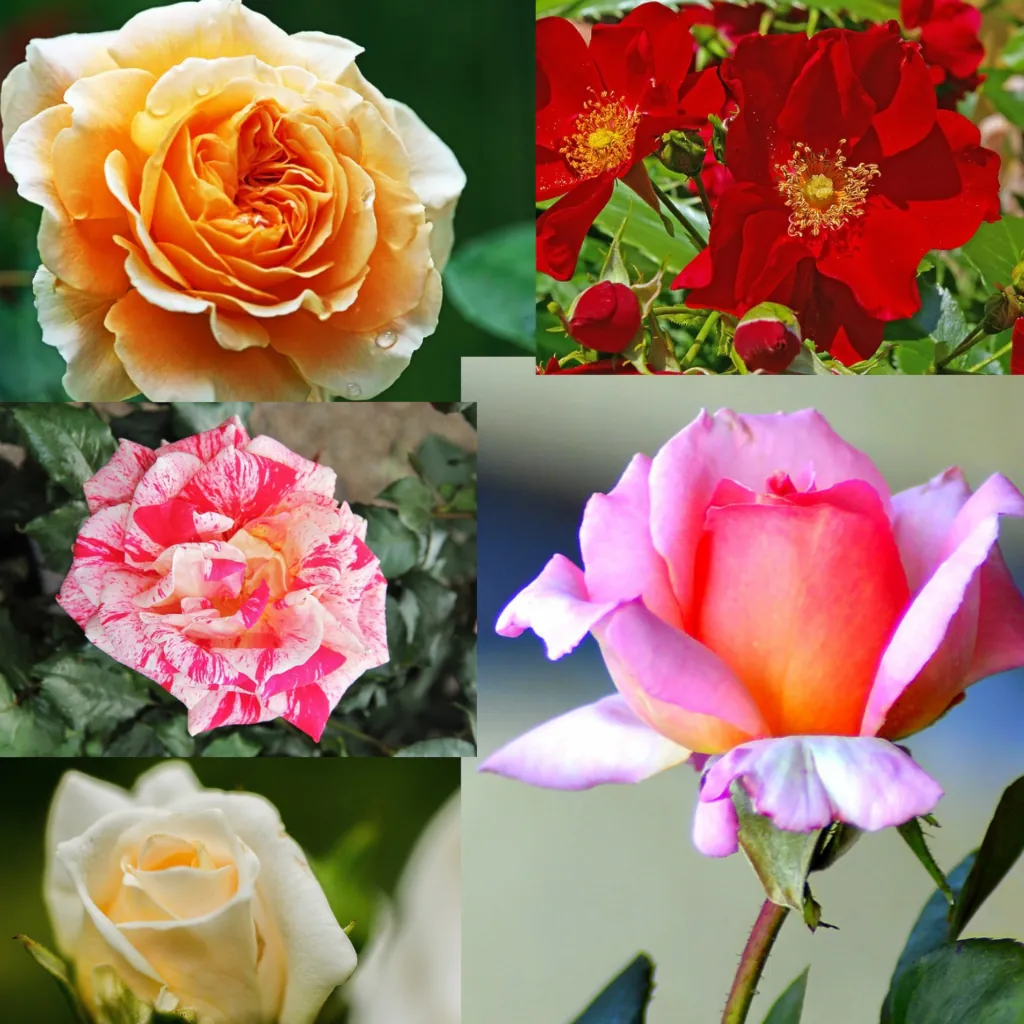
Step 2: Plant Your Garden Roses
The next step to grow garden roses in any climate is to plant them properly. The best time to plant garden roses is in early spring or fall when the soil is moist and the temperature is moderate. Avoid planting them in summer or winter, when the weather is too hot or too cold.
To plant your garden roses, you will need:
- A sunny spot that gets at least six hours of direct sunlight per day
- A well-drained soil that is rich in organic matter and has a pH of 6.5 to 7.0
- A shovel or a trowel
- A pair of gloves
- A bag of compost or manure
- A bag of mulch
- A watering can or a hose
Here are the steps to plant your garden roses:
- Dig a hole that is twice as wide and as deep as the root ball of your rose plant.
- Loosen the soil at the bottom and sides of the hole with your shovel or trowel.
- Mix some compost or manure with the soil that you removed from the hole.
- Place your rose plant in the center of the hole and spread its roots gently.
- Fill the hole with the soil-compost mixture and press it firmly around the base of the plant.
- Water your rose plant thoroughly until the water drains out of the hole.
- Cover the soil around your rose plant with a layer of mulch to retain moisture and prevent weeds.
- Repeat these steps for each rose plant that you want to grow.
Step 3: Prune Your Garden Roses
The third step to grow garden roses in any climate is to prune them regularly. Pruning is essential for keeping your roses healthy, productive, and beautiful. It helps to remove dead, diseased, or damaged branches, shape your rose plants, encourage new growth and flowering, and prevent diseases and pests.
The best time to prune your garden roses is in late winter or early spring before they start growing new leaves and buds. You can also do some light pruning throughout the year to remove faded flowers or unwanted shoots.
To prune your garden roses, you will need:
- A pair of sharp pruning shears
- A pair of gloves
- A bucket or a trash bag
Here are the steps to prune your garden roses:
- Put on your gloves and hold your pruning shears at a 45-degree angle.
- Cut off any dead, diseased, or damaged branches at their base or where they join another branch.
- Cut off any thin, weak, or crossing branches that interfere with air circulation or sunlight.
- Cut off any old or unproductive branches that do not produce flowers or new growth.
- Cut back any long or overgrown branches to maintain the shape and size of your rose plants.
- Cut off any faded flowers or hips to encourage more blooming.
- Dispose of the pruned branches in your bucket or trash bag and do not leave them on the ground.
Step 4: Water Your Garden Roses
The fourth step to grow garden roses in any climate is to water them properly. Watering is vital for keeping your roses hydrated, healthy, and blooming. It helps to deliver nutrients to the roots, to cool the plants, to prevent wilting, and to prevent diseases and pests.
The amount and frequency of watering your garden roses depend on several factors, such as the type of roses, the size of the plants, the type of soil, the weather, and the season. In general, you should water your roses deeply and infrequently, rather than shallowly and frequently. This will encourage deep and strong root growth and prevent waterlogging and root rot.
A good rule of thumb is to water your roses once a week in spring and fall, twice a week in summer, and once every two weeks in winter. However, you may need to adjust this schedule depending on the rainfall and temperature in your area. Before watering, insert your finger up to the second knuckle into the soil to assess the moisture level. It’s time to water if it indicates dry. You can wait if it feels damp.
To water your garden roses, you will need:
- A watering can or a hose
- A soaker hose or a drip irrigation system (optional)
Here are the steps to water your garden roses:
- Fill your watering can or hose with water.
- Water your rose plants at the base, near the soil, and not on the leaves or flowers.
- Water your rose plants slowly and deeply until the water drains out of the bottom of the hole or pot.
- Avoid watering your rose plants in the evening or at night, as this can promote fungal diseases.
- If you have a large rose garden or want to save time and water, you can use a soaker hose or a drip irrigation system to deliver water directly to the roots of your rose plants.
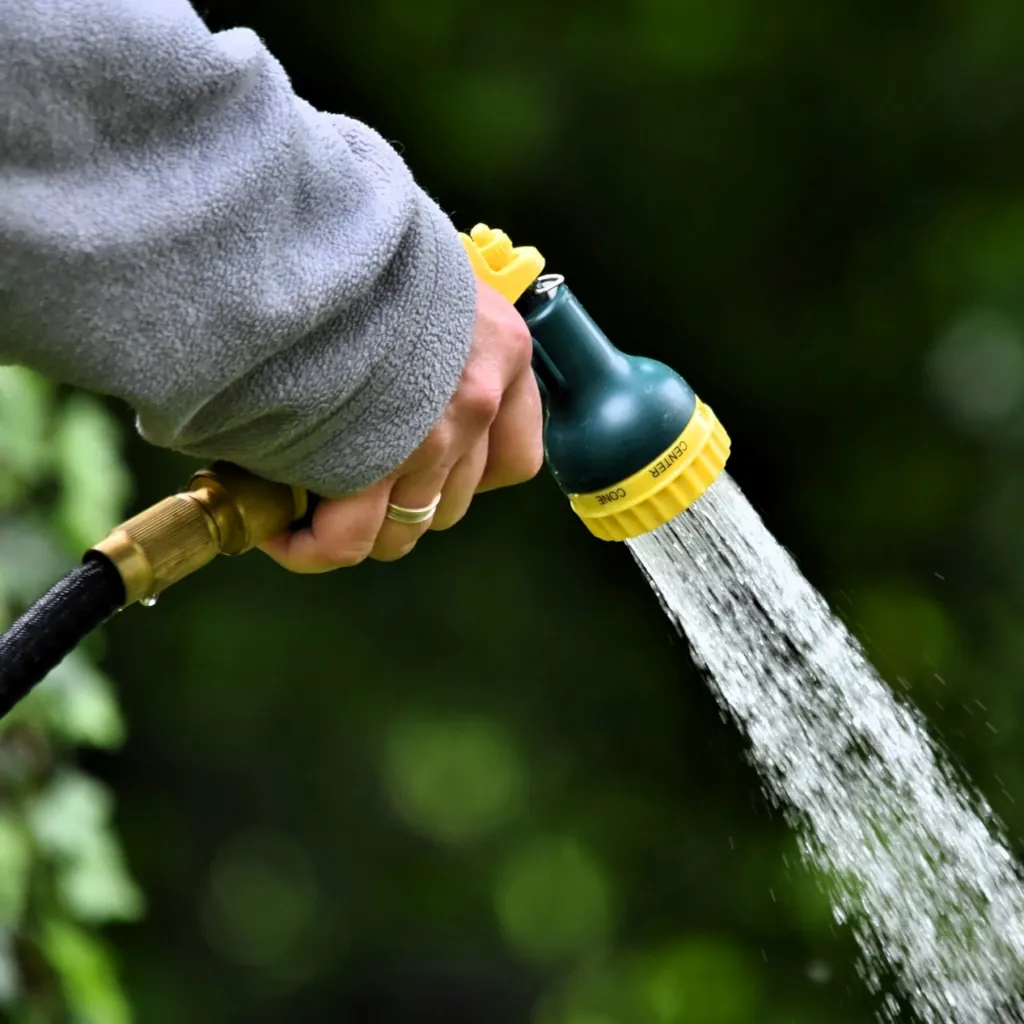
Step 5: Fertilize Your Garden Roses
The fifth step to grow garden roses in any climate is to fertilize them regularly. Fertilizing is important for providing your roses with the essential nutrients that they need to grow and bloom. It helps to boost their vigor, color, fragrance, and resistance to diseases and pests.
The type and amount of fertilizer that you use for your garden roses depend on several factors, such as the type of roses, the type of soil, the weather, and the season. In general, you should use a balanced fertilizer that contains nitrogen, phosphorus, and potassium (N-P-K), as well as micronutrients like iron, magnesium, and sulfur. However, you can choose between organic or synthetic fertilizers, granular or liquid fertilizers, and slow-release or fast-release fertilizers.
A good rule of thumb is to fertilize your roses once a month from spring to fall, starting after pruning and stopping before winter. Also, you may need to adjust this schedule depending on the growth and flowering of your rose plants. Therefore you can follow the instructions on the fertilizer package for the dosage and application method.
To fertilize your garden roses, you will need:
- A fertilizer of your choice
- A measuring cup or a spoon
- A watering can or a hose
Here are the steps to fertilize your garden roses:
- Measure the amount of fertilizer that you need according to the package instructions.
- Apply the fertilizer around the base of your rose plants, avoiding contact with the stems or leaves.
- Water your rose plants thoroughly after applying the fertilizer to dissolve them and deliver them to the roots.
- If you are using a liquid fertilizer, you can mix it with water in your watering can or hose and apply it directly to the soil.
- If you are using a slow-release fertilizer, you can apply it once at the beginning of the season and let it release nutrients gradually over time.
Step 6: Protect Your Garden Roses
The sixth and final step to grow garden roses in any climate is to protect them from pests and diseases. Pests and diseases are common enemies of garden roses that can damage their appearance, health, and performance. Moreover, they can cause holes, spots, discoloration, wilting, deformity, or death of your rose plants.
Some of the most common pests and diseases that affect garden roses are:
- Aphids: Small green insects that suck sap from new growth and buds
- Spider mites: Tiny red spiders that spin webs on leaves and suck sap
- Thrips: Small black insects that feed on petals and cause brown spots
- Japanese beetles: Metallic green beetles that chew holes in leaves and flowers
- Rose slugs: Green caterpillars that skeletonize leaves
- Black spot: A fungal disease that causes black spots on leaves
- Powdery mildew: A fungal disease that causes a white powdery coating on leaves
- Rust: A fungus that forms orange pustules on leaves.
- Botrytis blight: A fungal infection that creates grey mold on buds and blossoms.
Also, Mother Nature can be a tough director. No matter your climate, your roses may face harsh conditions. Here’s how to shield them:
- Winter Protection: In colder climates, provide extra insulation by mounding soil or mulch around the base of your roses to protect against frost. It’s like giving them a warm winter coat.
- Shade in Extreme Heat: During scorching summers, provide some afternoon shade to prevent sunburn on the rose petals. Think of it as an umbrella on a scorching day.
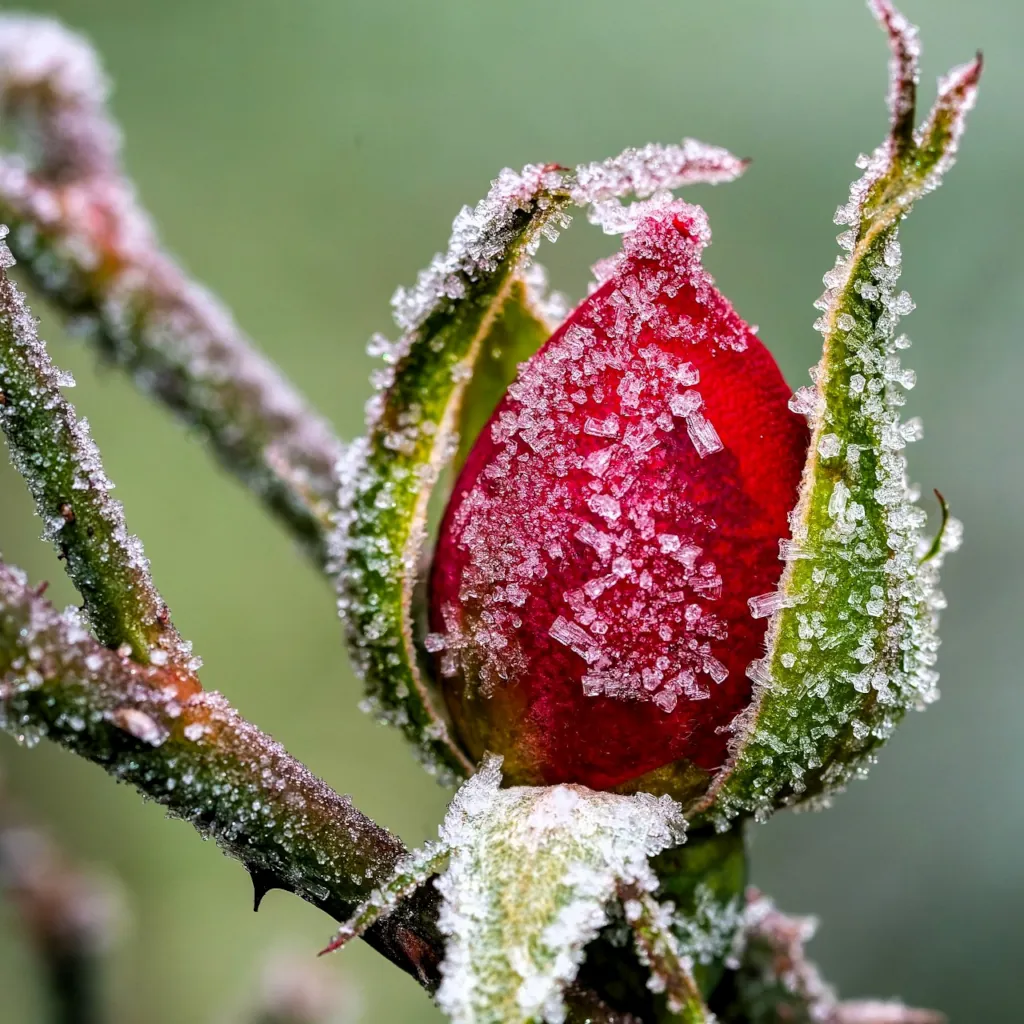
Conclusion
So, growing garden roses in any climate is a rewarding endeavor that requires dedication and a bit of horticultural finesse. By selecting the right roses, creating an optimal environment, and providing the necessary care, you can turn your garden into a mesmerizing masterpiece.
Frequently Asked Questions (FAQs)
Can I grow garden roses in a hot and arid climate?
Yes, you can! Select heat-tolerant rose varieties like “Sunny Knock Out” or “Zephirine Drouhin” and provide adequate water and shade during scorching summers.
How often should I prune my garden roses?
Before new growth develops, prune your roses in late winter or early spring. You can also deadhead (remove spent blooms) throughout the growing season to encourage more flowers.
Do garden roses need a lot of fertilizer?
Roses benefit from regular feeding. Apply a balanced fertilizer in spring and early summer to provide the nutrients they need for healthy growth and blooming.
Can I grow garden roses in pots or containers?
Yes, you can grow roses in pots. Choose compact or miniature rose varieties and ensure the pots have good drainage. Be attentive to watering and fertilizing in containers.
How do I protect my roses from common pests like aphids?
To ward off pests like aphids, you can use natural remedies like neem oil or insecticidal soap. Regularly inspect your roses and take action at the first sign of infestation.
Question for you
-
What’s your favorite rose variety, and have you tried growing it in your local climate?
Please feel free to share your answer in the comment box below.
Thank you for reading this blog post. I hope you found it informative and useful. I would love to hear your thoughts and opinions on this topic. Please leave a comment below and share your feedback, suggestions, questions, or anything else you want to say. I appreciate your support and engagement.
Author
Co-founder of Mom At Home Online, MBA (HR, Marketing), Blogger, Content Creator, Ex-Representative of Avon Beauty Products, Ex-Private Tutor, Experienced Music Teacher with 2 Diplomas, Trained Yoga Enthusiast, Movie Lover, and Traveler. Read more about us…
Last Modified Date:
